Fodsports FX 60C vs FX30C Pro: What's new techs are the FX 60C bringing to us? Fodsports is a brand worth-mention for helmet communication and video recording. This brand has established itself as a key player with its innovative Bluetooth camera intercom systems. Recently, Fodsports has released a new camera intercom, the FX 60C. How […]

Can Regular Grease Damage Your Honda Motorcycle? The Truth About Honda Grease
Keeping your Honda motorcycle well-lubricated is super important; it makes sure your ride stays smooth, lasts long, and keeps you safe. As a motorcycle rider, you might wonder, "Is it OK to slap on some regular grease on my Honda motorcycle?" It sounds like a no-brainer, but hold up—it gets tricky. Sure average grease could do the trick for a hot minute, but it's not the top choice for your bike's special part needs.
Let's jump into the nitty-gritty about grease—what it is, why it matters, and the best kinds for your Honda motorcycle. We're gonna talk about the danger of choosing the wrong grease and tell you why picking the perfect one can transform how your motorcycle rides and holds up.
Table of Contents
What Exactly is Grease and Why Does It Matter?
Grease is a thick, lubricating substance made by combining oil with a thickener like lithium, calcium, or aluminum soaps. Unlike oil, which flows more, grease stays put. This prevents metal parts from rubbing against each other, which cuts down on wear as time passes.
On motorcycles where heat, moisture, and shaking never stop, grease has a key job to keep things running without a hitch. It stops rust and corrosion, cuts down on friction, and makes sure important parts like axles, bearings, and seals work right. Using the best grease for your bike can boost how long it lasts and how well it runs.
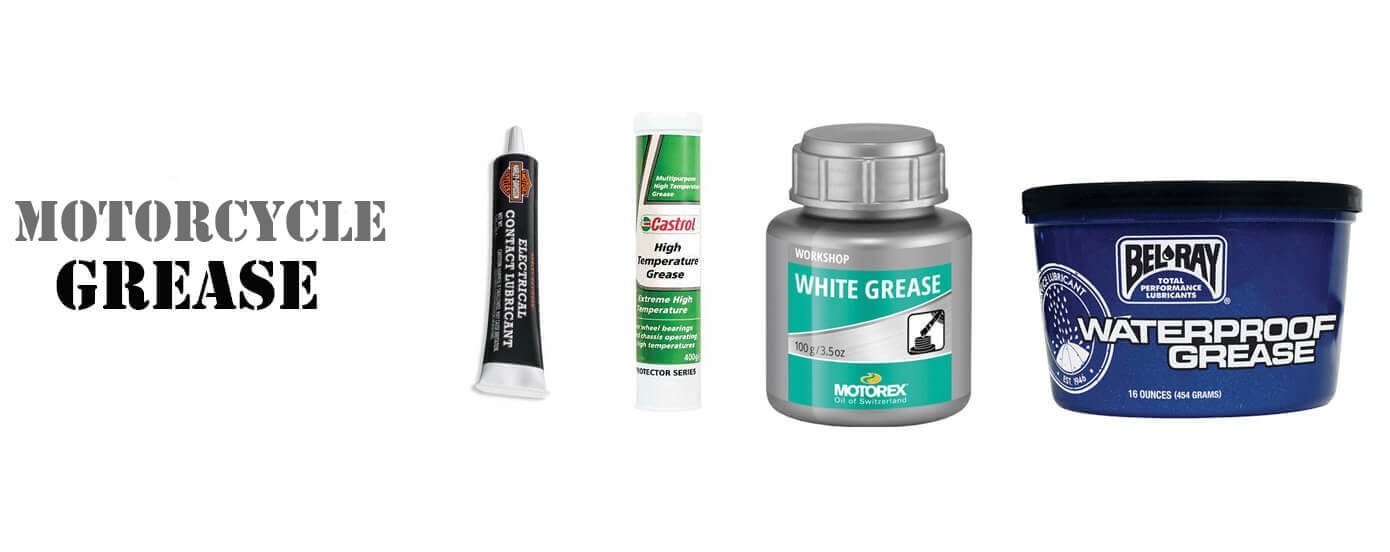
motorcycle grease
Can Regular Grease Damage Your Honda Motorcycle?
The short answer: It depends. In some cases, regular grease works fine, but most of the time, you should use grease made just for motorcycles.
Reasons:
- High-Temperature Resistance: Motorbikes crank up the heat close to their engines, tires, and exhaust spots. The usual grease, the kind you'd slap on cars or stuff at home just doesn't cut it under that scorching heat. Pick the wrong grease and boom, you're looking at some serious breakdowns or your parts wearing out way too fast.
- Water Resistance: Motorcycles especially dirt bikes and touring bikes often get exposed to water, rain, mud, or even snow. Regular grease might not offer enough water resistance to protect key parts. In contrast, special motorcycle greases are made to stand up to these elements. This ensures that important components like wheel hubs, axles, and swingarms stay well-oiled even in tough conditions.

motorcycle on rainy days
- Durability: Motorcycle grease contains additives that boost its stability and toughness. Regular grease can lose its power when exposed to heat and moisture. This may leave parts unprotected causing them to wear out too soon. To keep your Honda running for years, you need to use grease that offers long-lasting protection in tough conditions.
What Does the Honda Recommend?
Honda doesn’t just slap grease on parts haphazardly. Their engineers carefully choose grease types that align with the demands of specific components. From wheel axles to swingarms and steering head bearings, each part requires grease that can handle extreme heat, moisture, and stress. Honda typically recommends lithium-based or molybdenum disulfide (Moly) greases for many parts due to their superior heat and pressure tolerance. Each type is chosen specifically for its characteristics:
- Lithium-Based Grease: An all-purpose grease used for wheel bearings, axles, and pivot points.
- Moly Grease: Designed for high-pressure applications like suspension linkages and swingarm pivots.
- Specialized Grease for Seals: For areas like steering head bearings where seals and water resistance are critical.
Honda’s manuals often include grease specifications for each component, so reading your bike’s service manual is always a good idea.
Bluetooth intercom improves riding happiness
The Hidden Dangers of Using Wrong Grease
Using regular or incorrect grease might seem harmless, but it can lead to serious consequences for your Honda motorcycle. Let’s break down the risks in detail.
1. Inadequate Heat Resistance
When the motorcycle is running, the motorcycle gets super hot near the engine, axles, and where the exhaust pipes. The regular grease melts pretty easily. If it gets really hot, this grease can turn into liquid, drip off, or just burn up completely. That means the super important bits don't have any protection.
Example: A rider on a Honda Shadow used standard automotive grease for their axles, only to find it had melted after a long ride. The result? Damaged bearings and a hefty repair bill.
2. Lack of Water Resistance
Honda motorcycles are tough enough to deal with rain, slop, and slick streets. Regular grease just doesn't cut it for these motorcycles since it's not tough against water like the stuff made just for motorcycles. That regular grease might scram once it gets wet leaving your ride's metal bits to get all crusty and corroded.
So, get this - ever rolled your motorcycle into the garage after splashing through puddles and then heard it squeak the day after? Attention: That’s the sound of unprotected parts crying for help.
3. Shortened Lifespan of Components
Components like bearings, axles, and swingarms endure constant friction and pressure. Regular grease often breaks down faster than specialized motorcycle grease, leaving these parts vulnerable to wear. Over time, this leads to more frequent replacements and higher maintenance costs.
4. Chemical Compatibility Issues
Not all greases play well with each other. Some regular greases can chemically react with factory-recommended greases or seals, causing them to break down prematurely. This can lead to leaks, damaged seals, or compromised performance.
Best Types of Grease for Honda Motorcycles
Now let’s explore the best types of grease for your Honda motorcycle, ensuring peak performance and longevity.
1. Lithium-Based Grease

lithium based grease
Lithium grease is the Swiss Army knife of greases. It’s versatile, long-lasting, and resistant to both heat and water. Most importantly, it’s compatible with the demands of motorcycle components.
- Best For: Bearings, axles, swingarms, and wheel hubs.
- Why It Works: It stays in place, doesn’t break down easily, and provides excellent protection against friction and moisture.
- Pro Tip: Look for lithium grease with added anti-corrosion properties for extra durability.
2. Molybdenum Disulfide (Moly) Grease
If you’re tackling off-road trails or subjecting your Honda to high-stress conditions, Moly grease is a solid choice. It contains molybdenum disulfide, a compound that reduces wear under extreme pressure.
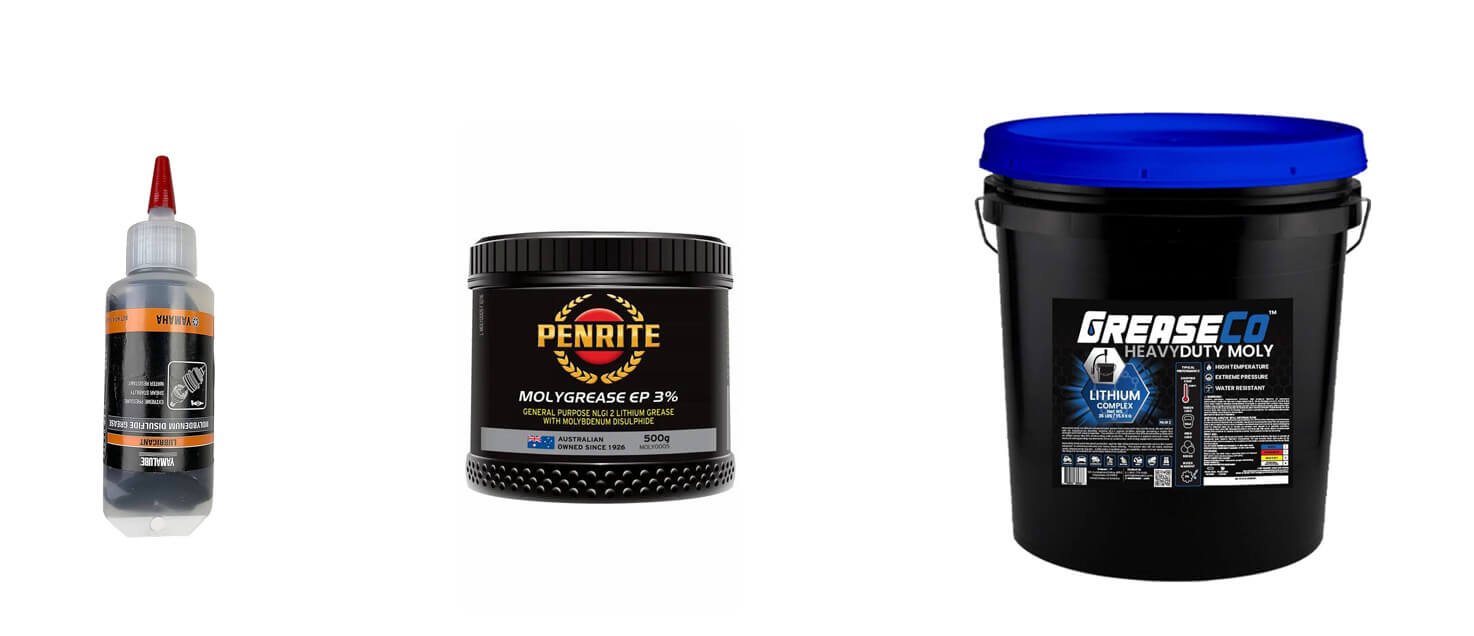
Molybdenum Disulfide Grease
- Best For: Axles, suspension linkages, and swingarm pivots.
- Why It Works: Moly grease excels in high-load scenarios, making it ideal for parts under heavy stress.
3. Synthetic Grease
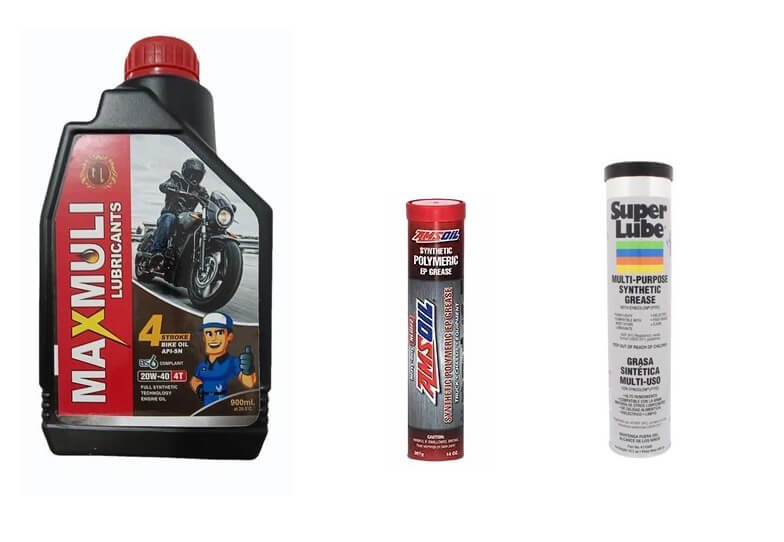
synthetic grease
Synthetic greases are designed to perform in extreme conditions. They offer superior heat resistance, water tolerance, and long-lasting lubrication.
- Best For: Racing bikes, high-performance motorcycles, or frequent long-distance rides.
- Why It Works: It’s engineered for demanding environments, providing unmatched performance.
- Worth It? Yes, but it’s pricier than other options, so weigh the benefits for your specific riding style.
4. Dielectric Grease for Electrical Connections
While not used for moving parts, dielectric grease is crucial for protecting your motorcycle’s electrical connections. It prevents moisture ingress, corrosion, and short circuits, ensuring your Honda’s electronics stay reliable.
Where to Use It: Battery terminals, spark plug boots, and electrical connectors.
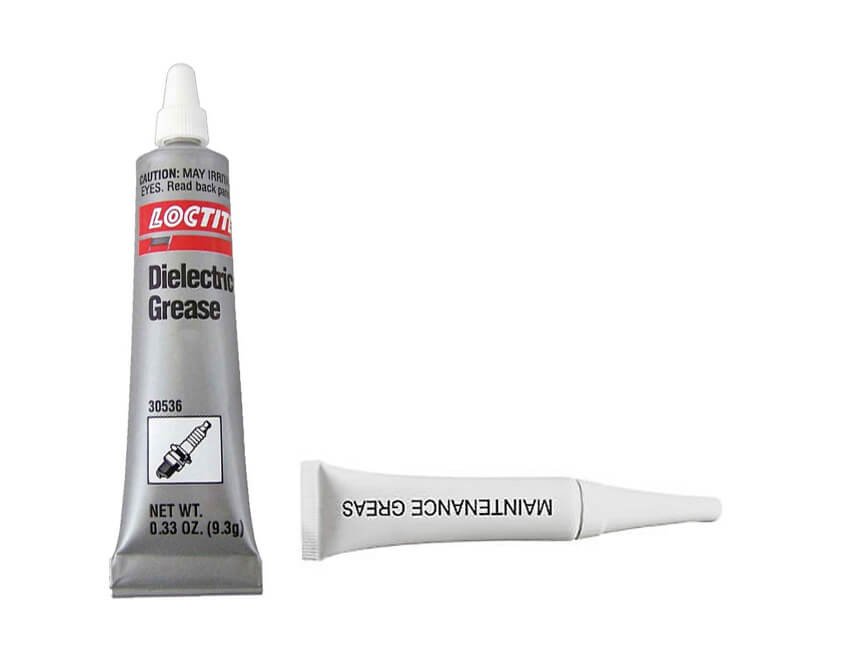
Dielectric Grease
Bonus Tips for Grease Application
- Clean Before Applying: Always clean the area thoroughly before applying new grease. Old grease, dirt, and grime can reduce effectiveness.
- Use Sparingly: Don’t overdo it! Too much grease can attract debris, which leads to buildup and accelerated wear.
- Follow Honda’s Manual: Stick to your bike’s maintenance manual for recommended grease types and application points.
- Don’t Mix Greases: Mixing different types of grease can lead to chemical reactions that degrade their effectiveness. If switching types, clean off the old grease first.
- Inspect Regularly: During routine maintenance, inspect greased areas for signs of wear, dryness, or contamination.
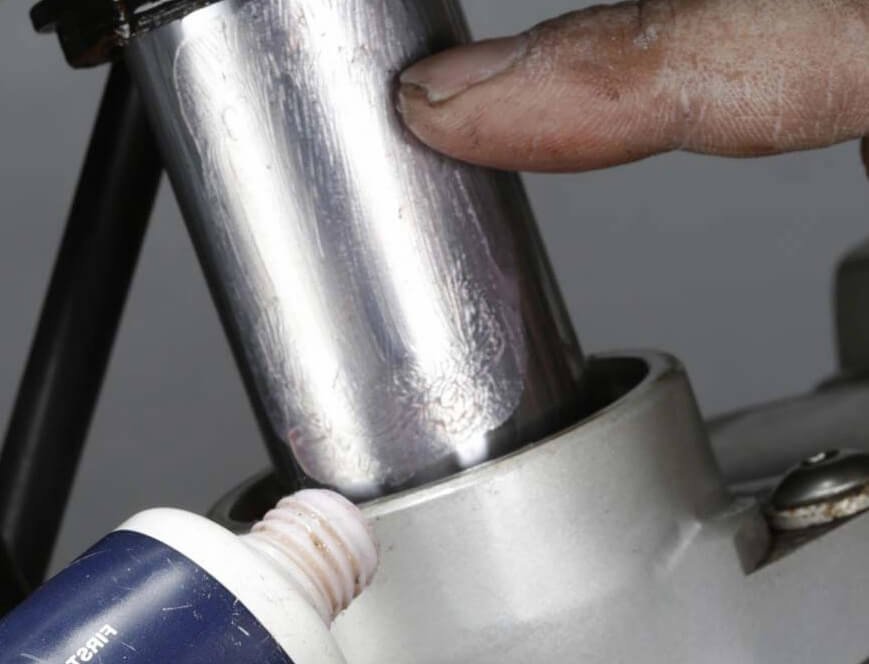
apply grease carefully
Conclusion
Can regular grease damage your Honda motorcycle? The answer is a resounding "yes" —if it’s not up to the task. Regular greases might work for household fixes, but your Honda deserves better. By using the right type of grease—whether it’s lithium-based, Moly, or synthetic—you’ll ensure your bike stays in top shape for years to come.
Don't forget, greasing isn't just to make things slippery. It's for shielding boosting performance, and giving you a little extra peace of mind. Next time you're about to grab some grease, go for something that's up to snuff for your Honda. Your motorcycle and your wallet will thank you.

Rodney L is a technical writer and product consultant with over a decade of experience in the motor industry. Rodney is a fan of performance machines that run fast and loud and an expert in all things custom. His numerous articles and write-ups are available at our knowledge base. Whether it’s something wrong with your motorcycle or you are building a custom bike, you can trust Rodney’s experience.
The Fodsports FX 60C is leading a revolution in the Bluetooth camera intercoms market. This 2025 newest intercom with camera by Fodsports is designed to enhance your riding experience. This device comes with advanced features like Bluetooth 5.4, 4K HD recording, 10-way intercom, and plenty more. So it is clear that this device seamlessly blends […]
For motorcycle riding safety, effective stopping rocks because it has an influence on how fast you stop how stable you are, and how much control you get. Figuring out when and how to use the front and back brakes can really bump up your riding game and keep you safe. This guide is gonna show […]
As the electric vehicle Revolution accelerates the world of motorcycles, is no exception To be a landmark year for electric motorcycles with Cutting Edge. Technology, performance, and design advancements reshape the market. Electric motorcycles. Now, offers impressive, power, extended range, and Sleek designs. Whatever you need, the options in 2025 are more diverse and exciting […]
Motorcycle enthusiasts are a dedicated group. They enjoy the sense of liberation on the open highway, the excitement of riding, and the opportunity to display their beloved two-wheeled machines. But in today’s world, there’s a new debate revving up in the motorcycle community: gas vs. electric motorcycles. If you're an experienced rider or a beginner […]
Shopping for a motorcycle enthusiast can be tricky, especially if you’re not familiar with the gear and gadgets that make riding more enjoyable. Whether it’s the thrill of the ride, the joy of the open road, or the love for motorcycles themselves, finding the perfect Christmas gift can feel overwhelming. Here is a guide of […]

